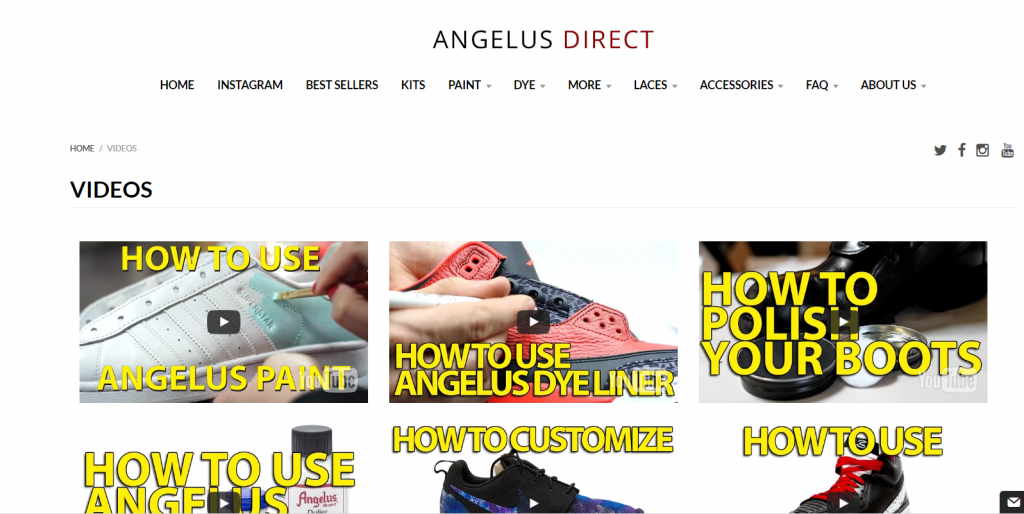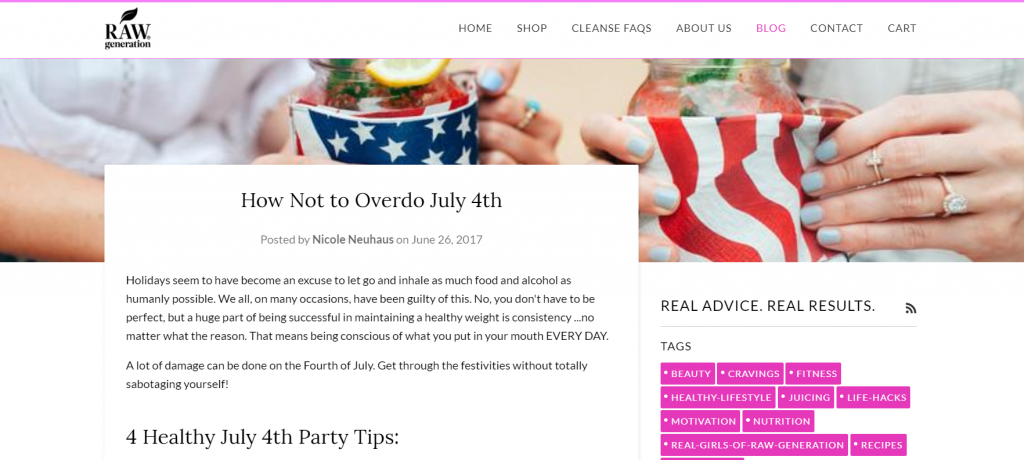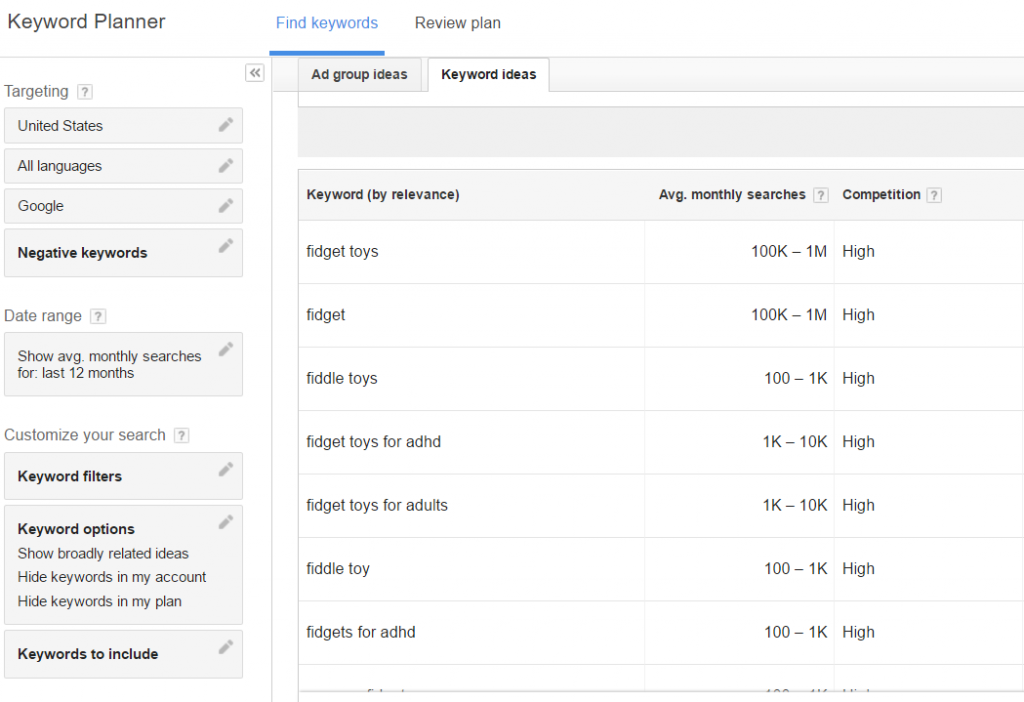Let’s talk content marketing strategy, y’all! I know, I know, you’re busy, and who has time to be pushing out blog content when you’re busy with all your Facebook and AdWords campaigns, customer service, and email marketing? The brutal truth is, content is key to increasing traffic and ultimately converting those sales. And the key to making your content work (sell) for you is a kick-ass content marketing strategy. Because:
- Focused content will get you better SEO rankings
- Consistent quality content will increase loyalty and brand awareness
- You position yourself as an authority in your niche
- It drives TRAFFIC
Content marketing strategies are the “why’s” and “how’s” of your content planning. They help position you in your eCommerce business niche and plan the stories you are going to tell through your various content. Defining how you’re going to tell them, where you are going to promote them and, of course, identify which prices of content is bringing in awesome results: AKA traffic.
No, You Can’t Just Wing It
It’s easy to get caught up in trends and fads, posting when and what you feel like, but to get those awesome results, you need a solid long-term plan. This will help you make sure your content is consistent, and that it follows your vision. The stats speak for themselves. The Content Institute 2016 report showed that “53% of the most effective marketers have a documented content marketing strategy, and 40% of the least effective marketers have no strategy at all.”
So the first step to being effective is to put pen to paper and outline your whole strategy!
A good content strategy will outline your content goals, the pain points your content will address for your target audiences, the platforms you will use to promote your content, your traffic goals and which metrics you should be following to ensure peak performance. Critical metrics like:
- Sales Metrics: the amount of leads resulting in actual sales
- Consumption Metrics: the number of site visits, content clicks, page views, etc.
- Lead Metrics: the amount of potential shoppers using pop-ups or leadpages to opt-in to mailing lists
- Sharing Metrics: the volume your content is shared or engaged with on social media
Still with me? Great, let’s dive into getting you those awesome results from your content marketing strategy.
Plan and Create Content For Each Step of Your Customer Journey
When outlining your strategy, you’ll want to create content that appeals to your target audience at every stage of your sales funnel. For instance, for those potential shoppers at the awareness stage, you’ll want to create niche blog posts, eBooks, infographics, and possibly guest posts on other blogs to drive brand awareness. You don’t want to hardsell them on these posts; this is your chance for your store to make a great first impression.
For those potential customers further down in the funnel, who know your store but haven’t purchased yet – your content could be created around new/trending products you are selling in your niche. Or you can draw from your UGC tools to create content/case studies showing customers using your products.
And for those existing customers, you will want to create content that supports and retains them, such as how-to guides or video tutorials, like these clever ones from eCommerce superstore Angelus Direct:
Identify Your Potential Customers’ Pain Points and Plan Content to Solve Them
When planning your content, think of the pain points, or problems, your target audience may face, and create content that answers those pain points. It goes without saying – but I will say it – that they need to be related to your product.
Let’s look at one of our awesome merchants, Raw Generation. Their positioning is to supply the highest quality products to help anyone lose weight, have more energy, feel better and be healthier. Their blog has an abundance of tips, recipes and videos that tackle the health pain points of their potential and current customers. For example, one of their recent posts shown below answered the pain point “how to stay healthy during a holiday.”
So when you are planning your content and strategies, think of pain points and go broad. Each of these core problems, the same ones you would be answering with your PPC campaigns, should become one of your content categories. This ensures the content you are planning really connects with your core audience and targets potential customers who have the problem that your product ultimately solves.
Identify the Right Keywords and Plan Content Around that
Now, I am not saying you need to write a piece of content jam-packed full of keywords. Please don’t do that, because for your content to be successful, you need to always write for a shopper (a human) and not for a search engine. What we are talking about here is researching and identifying a few keywords related to those core problems you have identified and then using the core keywords of your online store positioning to come up with quality content topics. This will help you slowly build up your SEO rankings with relevant content, as well as give you keywords you will want to use in landing pages, PPC campaigns, and your metadata.
You can use the same methods and tools you would for finding the right keywords for PPC campaigns to search for keywords to use to create content topics, also referencing such tools as AdWords keyword planner.
Don’t Cut Corners With Content
No amount of research, solid topics or good planning is enough to drive crappy content to success. Each piece of content you create – whether it’s a blog post or a how-to video – needs to be on-point with your brand, well-written for humans and delivered to the right people at the right stages in your funnel. Here are just a few of many examples of the different types of content you can create:
- Listicles: 10 Summer Dress Trends to Follow Today (Clothing Store)
- How-Tos and Guides: How to Decorate Your home for Summer (Home Decor Store)
- UGC/Case Study: Meet Makeup Artist So-and-So (Make-up Store)
- Feature: Meet So-and-So on Your Team
- Guest Posts from bloggers in your niche: Trend Advice from Fashion Blogger XYZ
From video to eBooks, the world of content is at your fingertips! And remember: it’s always better publish less content that is high quality rather than to post more content that is mediocre. Always spell check, provide valuable, actionable advice your readers will find helpful and of course…
… Don’t Forget SEO basics
To help your content along those search rankings, make sure every piece of content you post on your site or blog is fully optimized with:
- H1 tags
- Unique Page Titles
- Good quality images
You can find more SEO tips from our in-house expert Tye’s 9 SEO tips and DIY solutions.
Drive Traffic with Distribution Goals
Once you know what categories you will cover, have good topics and quality content to back it up, it’s time to think about where you will distribute your content. Distribution is key to ensuring the right people are seeing your content, and it ultimately affects the amount and type of traffic your online store blog is getting. Distribution platforms such as:
- AdWords
- Search Engines
- Facebook Ads
- Content Platforms like Outbrain or Taboola
- Pinterest Ads
- Mailchimp and other email marketing platforms
- Quora
- Social Media accounts (unpaid)
- Medium
There are an abundance of tools out there to get your content out there. Do your research, find out where your potential shoppers are “hanging out” on the web and target them efficiently.
Another way to get leverage is to harness relationships with influencers in your niche. By quoting influencers in your posts, you are not only giving your posts credibility but are creating relationships for future backlinks and opening yourself up to opportunities to get your content shared by these influences.
—
Final Thoughts
Content marketing strategy planning is a long-term objective, however, if done consistently right, it can reap huge rewards. Like with any marketing strategy, once your content strategy is in place and you’re full-steam-ahead, you will want to see how it is performing. Use a Simple Method to Measure Content Marketing ROI and stick to it. You’ll want to look out for the following to ensure your content marketing plan is bringing in awesome results:
- Higher conversion rates
- Improved lead generation
- Increased social engagement and referral traffic
- Increased time spent on-site and better rankings
Have some content marketing strategy tips of your own? Leave them in the comments below.

Nicole is a content writer at StoreYa with over sixteen years experience and flair for storytelling. She runs on a healthy dose of caffeine and enthusiasm. When she's not researching the next content trend or creating informative small business content, she's an avid beachgoer, coffee shop junkie and hangs out on LinkedIn.
Recommended articles
 Facebook Ads for eCommerce: 16 Strategies, Examples & Tips
Facebook Ads for eCommerce: 16 Strategies, Examples & Tips
 How to Build a Winning eCommerce Ads Strategy
How to Build a Winning eCommerce Ads Strategy
 Google Ads for eCommerce: Everything You Need to Know
Google Ads for eCommerce: Everything You Need to Know
 10X Your Traffic with PPC Management Software
10X Your Traffic with PPC Management Software
Comments
Powered by Facebook Comments






